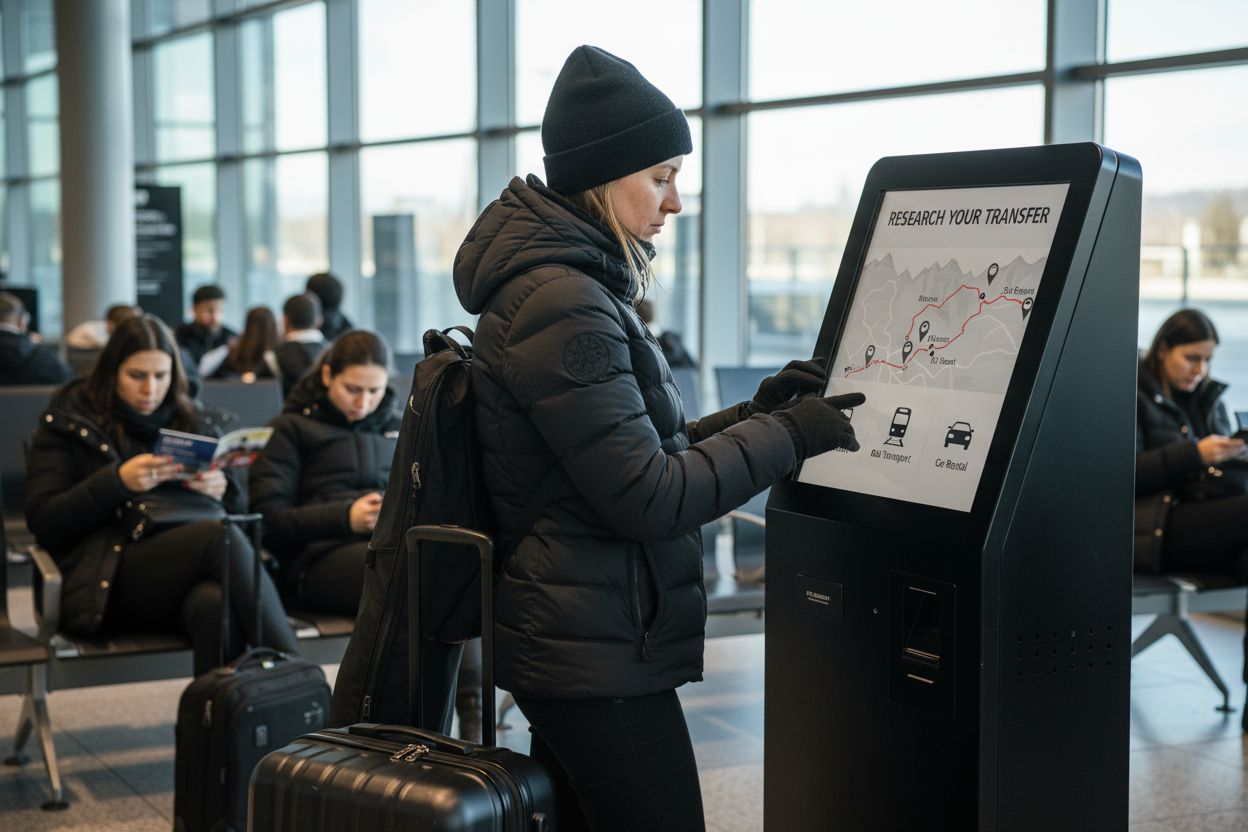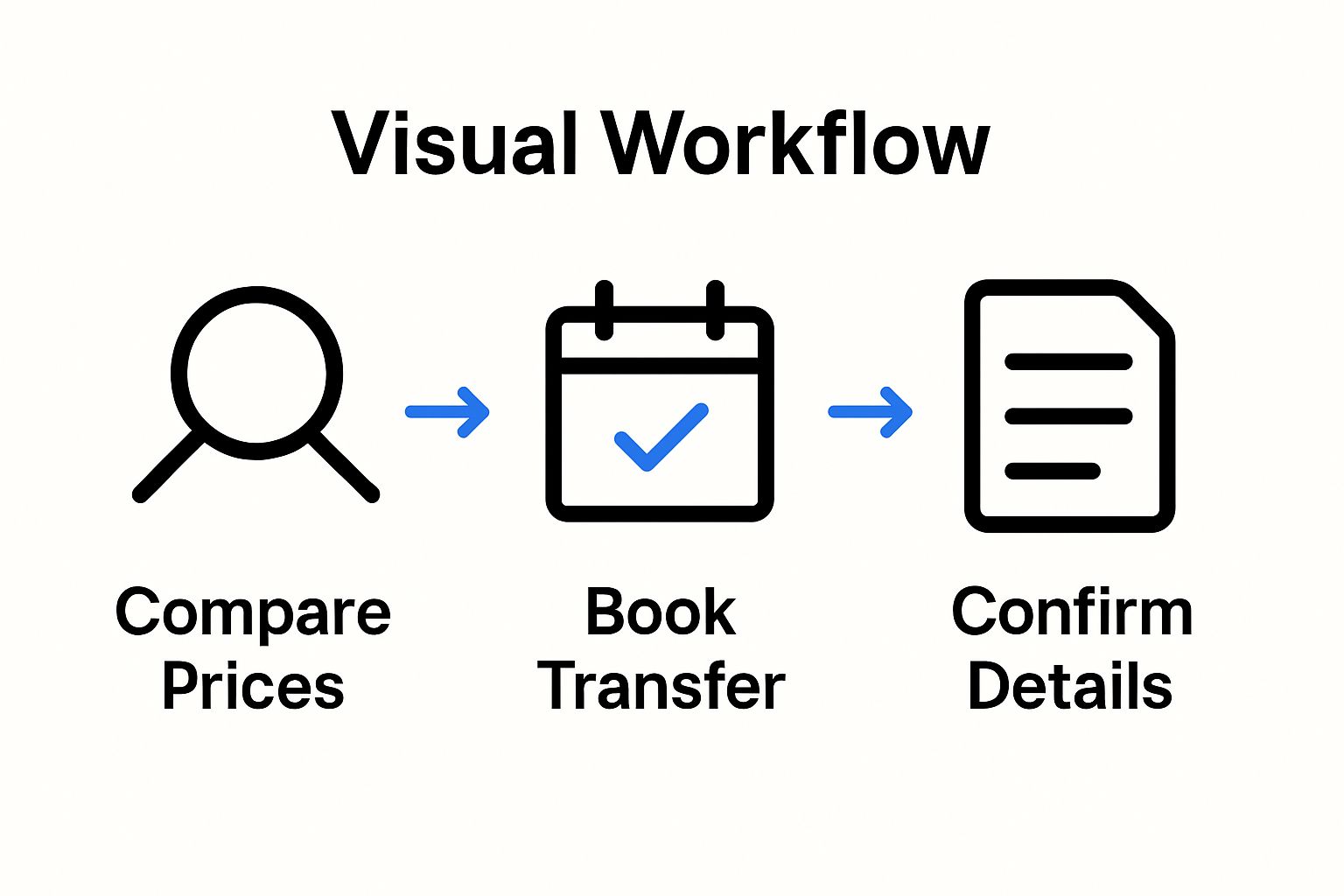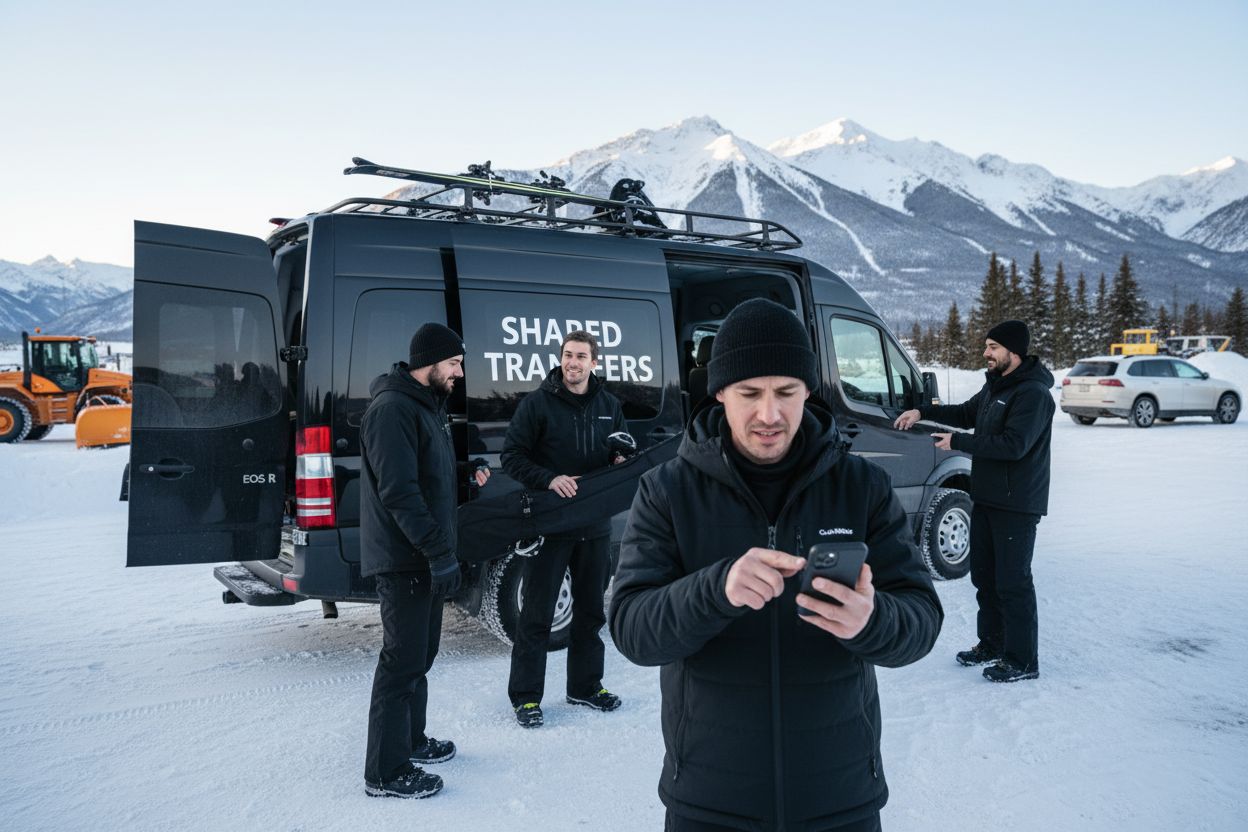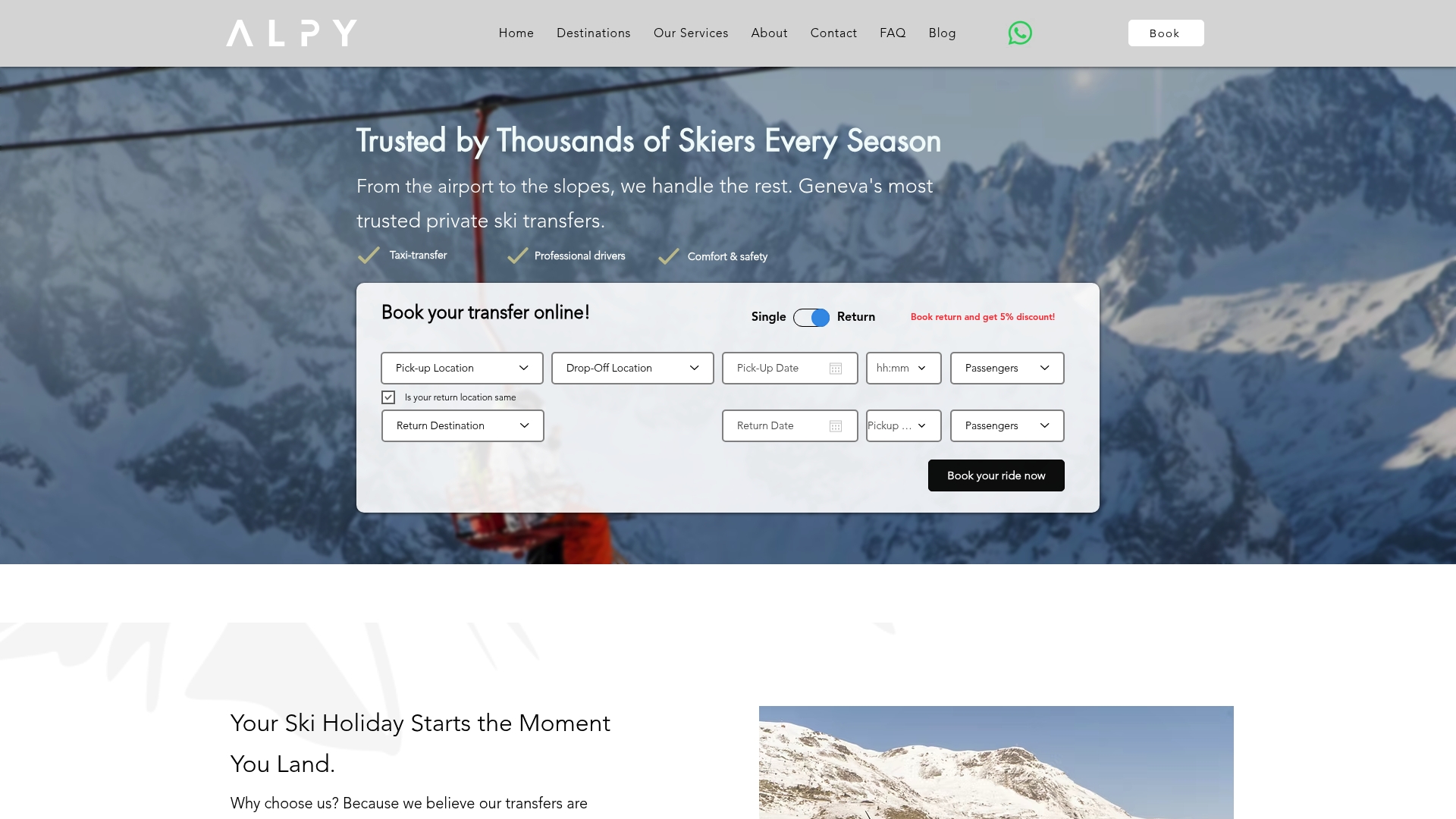How to Save on Ski Transfers: Budget-Friendly Tips
- plodh79
- Oct 8
- 11 min read

Scoring affordable ski transfers can make or break your winter getaway budget. Plenty of travelers assume transfer costs are set in stone, especially when popular resorts get busy. But some smart research can slash these prices by as much as 35% just by booking a few months early or comparing platforms that often save you 15-30%. Airports like Geneva offer a mix of shuttles, trains, and public options that most people overlook, and knowing the tricks now can put serious cash back in your ski trip fund.
Table of Contents
Quick Summary
Key Point | Explanation |
1. Research all transfer options | Understand different transportation methods available from your arrival airport to optimize your budget and convenience. |
2. Compare services for best value | Use spreadsheets and online platforms to evaluate prices and service inclusions, ensuring you get the most value. |
3. Book transfers early for savings | Secure substantial discounts by reserving your transfers well in advance, ideally 3-6 months ahead. |
4. Consider shared or public transport | Explore shared shuttles and local public transit for significant savings on transfer costs compared to private options. |
5. Prepare documents for a smooth arrival | Organize essential travel documents and confirm booking details to avoid complications during your transfer. |
Step 1: Research Your Transfer Options
Knowing how to save on ski transfers starts with thorough research and strategic planning. Your transfer choices can significantly impact your overall travel budget, making this initial step crucial for cost-conscious winter sports enthusiasts.
Begin your research by understanding the different transfer options available from your arrival airport. Airports like Geneva serve multiple ski regions, offering various transportation methods including shared shuttles, private transfers, public transportation, and rental vehicles. Each option carries distinct cost implications and convenience factors.
Shared shuttle services frequently represent the most budget friendly transfer method. These group transportation options allow multiple travelers to split the total transfer cost, reducing individual expenses. Typically, shared shuttles operate on predetermined routes connecting major airports to popular ski destinations. By booking in advance and being flexible with pickup times, you can secure more affordable rates.
Online comparison platforms become invaluable tools during your research phase. Websites specializing in ski transfers enable you to quickly compare prices, read customer reviews, and understand the nuanced differences between transportation providers. According to Travel Weekly, comparing at least three different transfer services can help travelers save up to 30% on transportation costs.
Consider factors beyond just the ticket price when researching transfers. Look into additional fees, luggage allowances, child seat availability, and cancellation policies. Some budget transfer services might appear cheaper initially but include hidden charges that inflate the final price. Transparency in pricing becomes a critical consideration.
Time of booking also significantly influences transfer costs. Early reservations often come with substantial discounts, sometimes reaching 20% off standard rates. Many transfer companies incentivize advanced bookings by offering lower prices for passengers who plan ahead. Traveling during off peak seasons or midweek can further reduce your transfer expenses.
Lastly, evaluate your specific travel needs. Group sizes, equipment requirements, and comfort preferences will influence your ideal transfer method. A solo traveler might find shared shuttles most economical, while larger families or groups might benefit from private transfer services that can be split among multiple passengers.
Here is a comparison table outlining the key features, pros, and cons of the main ski transfer methods discussed in the article.
Transfer Method | Typical Cost | Main Advantages | Key Considerations |
Shared Shuttle | Low | Cost-effective, scheduled routes, eco-friendly | May require flexibility for pick-up times and stops |
Private Transfer | High | Direct, private, good for groups | Most expensive, less eco-friendly |
Public Transportation | Lowest | Significant savings, local experience | Transfers, scheduling, equipment limits |
Rental Vehicle | Variable | Full flexibility, useful for multiple stops | Driving in winter conditions, parking |
Successful transfer research means comparing multiple options, understanding full pricing structures, and aligning transportation choices with your personal travel requirements and budget constraints.
Step 2: Compare Prices and Services
Comparing prices and services represents the critical bridge between initial research and making a smart, cost effective ski transfer selection. This step transforms your preliminary findings into actionable choices that balance affordability with quality transportation.
Start by creating a comprehensive spreadsheet or comparison document that tracks different transfer services. Digital tools like Google Sheets or Excel can help you systematically record pricing details, pickup locations, vehicle types, and service inclusions. Include columns for base price, additional fees, luggage allowances, and customer reviews to create a holistic comparison framework.
Online comparison platforms become essential during this phase. Websites dedicated to ski transfers allow you to view multiple service providers simultaneously, presenting transparent pricing structures. According to TravelPerk, using comparison platforms can help travelers save an average of 15-25% on transportation costs by revealing competitive rates side by side.
Pay close attention to service inclusions beyond the base ticket price. Some transfer services might appear cheaper initially but lack critical amenities like ski equipment transport, child seats, or flexible booking options. A slightly more expensive transfer could provide significant added value through comprehensive services that reduce overall travel stress.
Consider the time of year and potential seasonal pricing variations. Winter peak seasons typically command higher transfer rates, especially during holiday periods and school breaks. Midweek and early morning transfers often come with more competitive pricing. Flexibility in your travel schedule can translate directly into cost savings.
Customer reviews and ratings provide invaluable insights during your comparison process. Look beyond price points and examine feedback regarding punctuality, driver professionalism, vehicle condition, and overall customer experience. Reputation matters as much as cost when selecting a transfer service.
Specific comparison factors to prioritize include:
Pickup and drop off locations
Total journey time
Vehicle capacity and comfort level
Cancellation and modification policies
Insurance and safety credentials
Utilize multiple information sources during your comparison. While online platforms provide immediate pricing, contacting transfer companies directly can sometimes reveal unpublished discounts or group rate options. Some services offer special promotions for early bookings or returning customers.
Successful price and service comparison means developing a nuanced understanding of what each transfer option genuinely offers. Your goal is not just finding the cheapest option, but identifying the most value rich transfer that meets your specific travel requirements and budget constraints.

Step 3: Book Early or at the Right Time
Timing plays a crucial role in securing budget friendly ski transfers. Understanding when and how to book your transportation can unlock significant savings and reduce travel related stress. The art of strategic booking goes beyond simply selecting the first available option.
Early booking represents one of the most effective strategies for reducing transfer costs. Most ski transfer services offer substantial discounts for passengers who reserve their transportation well in advance. According to Travel Industry Research, travelers who book transfers 3-6 months ahead can save up to 35% compared to last minute reservations.
Consider the seasonal dynamics of ski transfer pricing. Winter peak seasons typically command higher rates, especially during holiday periods like Christmas and New Years. School break weeks also see dramatic price increases. Smart travelers strategically plan their bookings during shoulder seasons or midweek periods when demand is lower and prices become more competitive.
Digital booking platforms and transfer service websites often feature dynamic pricing models. Price tracking tools can help you monitor rate fluctuations and identify optimal booking windows. Some advanced travelers set up price alerts that notify them when transfer prices drop below their target range.
This proactive approach allows for maximum flexibility and potential cost savings.
Flexibility becomes a significant advantage when booking ski transfers. If your travel dates are adjustable, consider booking during less popular travel periods. Midweek transfers and early morning or late evening routes frequently offer more attractive pricing compared to weekend or prime time slots.
Key considerations for timing your transfer booking include:
Seasonal pricing variations
Holiday and school break periods
Weekday versus weekend rates
Advance booking windows
Potential group or return trip discounts
Some transfer services provide additional incentives for early reservations. These might include complimentary upgrades, flexible cancellation policies, or reduced deposit requirements. Read the fine print carefully and understand the specific terms associated with early booking discounts.
Technology has transformed the booking process, making real time price comparisons easier than ever. Utilize multiple online platforms, set up price tracking notifications, and remain open to adjusting your travel plans if significant savings become available. Patience and strategic timing can translate into substantial financial benefits.
Successful early booking means striking a balance between securing competitive rates and maintaining flexibility. Your goal is to lock in a transfer service that offers both affordability and reliability, giving you peace of mind for your upcoming ski adventure.
Step 4: Consider Shared Transfers or Public Transport
Budget conscious travelers can dramatically reduce ski transfer expenses by exploring shared transportation and public transit options. These alternatives offer significant cost savings while providing unique opportunities to experience local travel dynamics.
Shared shuttle services represent an excellent compromise between affordability and convenience. Group transfer arrangements allow multiple travelers to split transportation costs, reducing individual expenses substantially. These services typically operate along predetermined routes connecting major airports to popular ski destinations, making them an attractive option for solo travelers and small groups.
Public transportation networks, particularly in European ski regions, provide remarkably efficient and economical transfer solutions. According to Snow Carbon, train and bus combinations can cut transfer costs by up to 60% compared to private transportation. Learn about 7 types of airport transfers to understand the full spectrum of transportation possibilities.
Research local transit connections thoroughly before your trip. Many ski destinations feature integrated transportation systems that connect airports, train stations, and mountain resorts seamlessly. Switzerland, France, and Austria excel in providing comprehensive public transport networks designed specifically for winter sports enthusiasts.
Consider the practical advantages of shared transfers beyond pure cost savings. These services often include additional benefits like:
Professional drivers familiar with mountain routes
Scheduled departure times
Potential luggage assistance
Reduced environmental impact
Opportunities to meet fellow travelers
Timing and planning become crucial when selecting shared or public transportation. Some routes have limited schedules, particularly during off peak hours or in more remote ski destinations. Advanced booking and thorough route mapping can help you navigate potential scheduling challenges.
Technology simplifies the process of finding and booking shared transfers. Numerous online platforms specialize in connecting travelers with group transportation services. Mobile apps and websites allow real time booking, route tracking, and price comparisons, empowering travelers to make informed decisions.
Remember that shared transfers might require slightly more flexibility compared to private transportation. You might need to accommodate other passengers schedules and potentially make multiple stops. However, the financial benefits and unique travel experiences often outweigh these minor inconveniences.

Successful shared transfer selection means balancing cost savings with practical travel requirements. Your goal is finding a transportation option that provides reliable, affordable passage to your ski destination while maintaining comfort and minimizing travel stress.
Step 5: Prepare for a Smooth Arrival
Preparing for a seamless ski transfer arrival involves strategic planning and proactive organization. This final step ensures that your carefully researched and booked transfer translates into a stress free travel experience with minimal unexpected complications.
Communication becomes paramount in the days leading up to your transfer. Confirm your booking details, verify pickup locations, and ensure all contact information is current. According to UK Government Travel Advice, having accurate documentation and clear communication can prevent most transfer related challenges. Learn more about coordinating airport pickups to minimize potential travel disruptions.
Create a comprehensive travel folder containing all essential transfer documents. Digital and physical copies of your booking confirmation, identification, travel insurance, and contact information for your transfer service should be readily accessible. Smartphone screenshots and cloud storage provide backup options in case physical documents are misplaced.
Luggage preparation plays a crucial role in ensuring a smooth transfer experience. Pack strategically, considering ski equipment transportation requirements. Some transfer services have specific guidelines regarding ski bags, equipment dimensions, and additional luggage fees. Measure and weigh your bags in advance to avoid unexpected charges or loading complications.
Key items to prepare before departure include:
Transfer booking confirmation
Passport and travel documents
Contact information for transfer service
Emergency contact details
Digital and physical copies of important paperwork
Technology offers numerous tools to streamline your arrival process. Download mobile apps provided by your transfer service that offer real time tracking, communication channels, and potential last minute updates. Many services now provide GPS tracking, estimated arrival times, and direct messaging with drivers.
Consider potential language barriers and communication challenges, especially when traveling internationally. Learn a few basic phrases in the local language, save translation apps on your smartphone, and have a backup communication plan. Some travelers find international SIM cards or portable WiFi devices helpful for staying connected during transfers.
Weather and seasonal conditions can significantly impact transfer experiences. Check local forecasts and road conditions before your departure. Winter mountain routes may require additional travel time or alternative routing due to snow or ice. Flexibility and preparedness become your greatest assets in navigating potential travel uncertainties.
Below is a checklist summarizing all the key documents and preparations to ensure a smooth and organized ski transfer arrival experience.
Preparation Item | Purpose/Reason | Notes |
Booking confirmation | Verifies reservation with transfer service | Digital and physical copies |
Passport/travel documents | Required for identification and check-in | Keep easily accessible |
Transfer service contact info | For coordination and in case of issues | Save in phone and print |
Emergency contacts | Extra assurance in case of disruption | Share with a travel partner |
Luggage prepped per guidelines | Avoid extra fees and complications | Measure/weigh bags in advance |
Travel insurance details | Backup in case of emergencies | Keep copy with documents |
Mobile app or GPS tracking info | Monitor transfers in real time | Optional, if service offers it |
Successful transfer preparation means anticipating potential challenges and having comprehensive backup plans. Your goal is creating a smooth, stress free transition from airport to ski destination, allowing you to focus on the exciting adventure ahead.
Turn Your Ski Transfer Savings into a Stress-Free Experience
After learning how to save money and compare options for your next ski transfer, you might still worry about missing out on reliability or comfort. Choosing the wrong service could mean unexpected fees, confusing booking steps, or unreliable pickup times. You deserve cost savings without sacrificing the peace of mind that makes your trip enjoyable.

Take control of your journey and skip the hassle by booking your private, on-time airport transfer directly with Alpy Transfers. Our all-inclusive pricing, friendly drivers, and real-time flight monitoring ensure you get from Geneva to your ski resort comfortably with no hidden costs. Compare your options, secure your ride early, and relax knowing your transfer is as smooth as your ski run. Visit our easy-to-use booking platform and see why so many travelers trust us for seamless transportation on every winter adventure.
Frequently Asked Questions
What are the most affordable options for ski transfers?
Shared shuttle services and public transportation are typically the most budget-friendly transfer options. Shared shuttles allow multiple travelers to split costs, while public transport can save travelers up to 60% compared to private transfers.
How can I find the best prices for ski transfers?
Utilizing online comparison platforms can help you easily compare prices and services from various transfer providers. Make sure to track different services in a spreadsheet, noting service inclusions and additional fees.
When is the best time to book ski transfers for maximum savings?
Booking your ski transfers 3-6 months in advance can lead to significant savings, sometimes up to 35%. Additionally, traveling during off-peak seasons or midweek can help you secure lower rates.
What should I prepare before my ski transfer to ensure a smooth experience?
Confirm your booking details, prepare a comprehensive travel folder with essential documents, and pack strategically, considering luggage guidelines for ski equipment. Real-time tracking apps from your transfer service can also help with arrival planning.
Recommended
